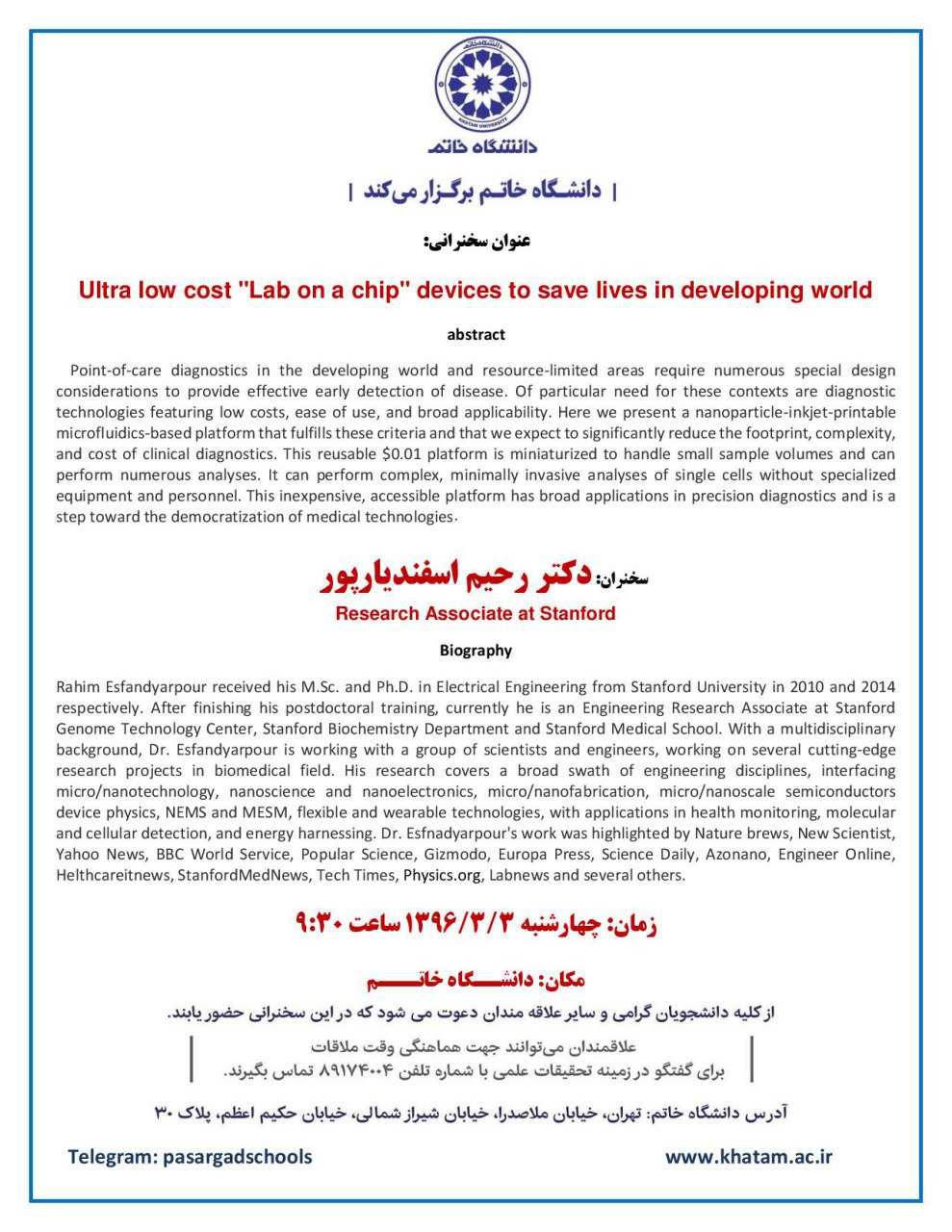
Khatam University, Building No2.
Address: Mollasadra Blvd., North Shirazi St., East Daneshvar St., No.17.
See location on Google map
Rahim Esfandyarpour
Research Associate Associate at Stanford
Overview
Point-of-care diagnostics in the developing world and resource-limited areas require numerous special design considerations to provide effective early detection of disease. Of particular need for these contexts are diagnostic technologies featuring low costs, ease of use, and broad applicability. Here we present a nanoparticle-inkjet-printable microfluidics-based platform that fulfills these criteria and that we expect to significantly reduce the footprint, complexity, and cost of clinical diagnostics. This reusable $0.01 platform is miniaturized to handle small sample volumes and can perform numerous analyses. It can perform complex, minimally invasive analyses of single cells without specialized equipment and personnel. This inexpensive, accessible platform has broad applications in precision diagnostics and is a step toward the democratization of medical technologies.
Biography

Rahim Esfandyarpour received his M.Sc. and Ph.D. in Electrical Engineering from Stanford University in 2010 and 2014 respectively. After finishing his postdoctoral training, currently he is an Engineering Research Associate at Stanford Genome Technology Center, Stanford Biochemistry Department and Stanford Medical School. With a multidisciplinary background, Dr. Esfandyarpour is working with a group of scientists and engineers, working on several cutting-edge research projects in biomedical field. His research covers a broad swath of engineering disciplines, interfacing micro/nanotechnology, nanoscience and nanoelectronics, micro/nanofabrication, micro/nanoscale semiconductors device physics, NEMS and MESM, flexible and wearable technologies, with applications in health monitoring, molecular and cellular detection, and energy harnessing. Dr. Esfnadyarpour’s work was highlighted by Nature brews, New Scientist, Yahoo News, BBC World Service, Popular Science, Gizmodo, Europa Press, Science Daily, Azonano, Engineer Online, Helthcareitnews, StanfordMedNews, Tech Times, Physics.org, Labnews and several others.
